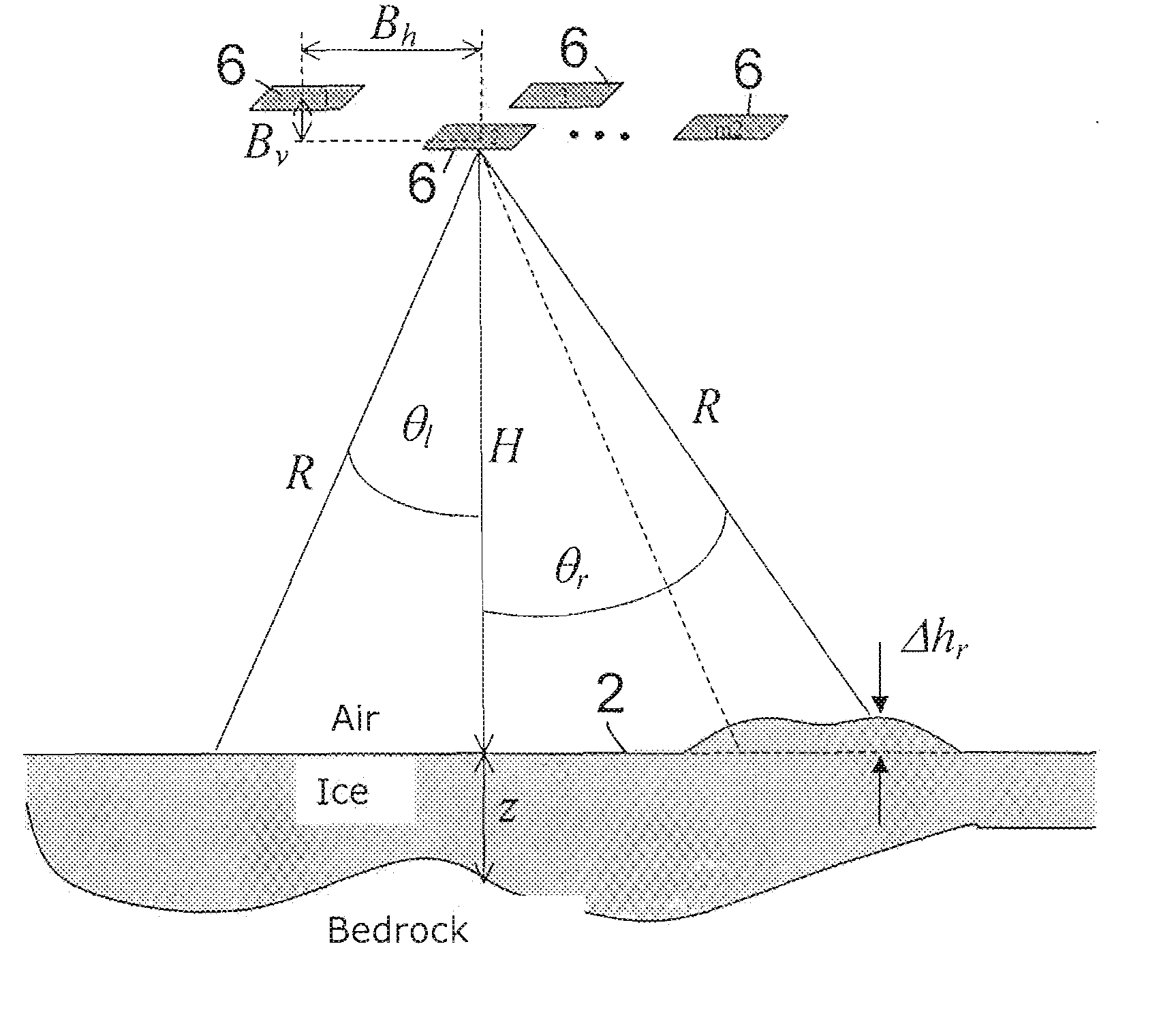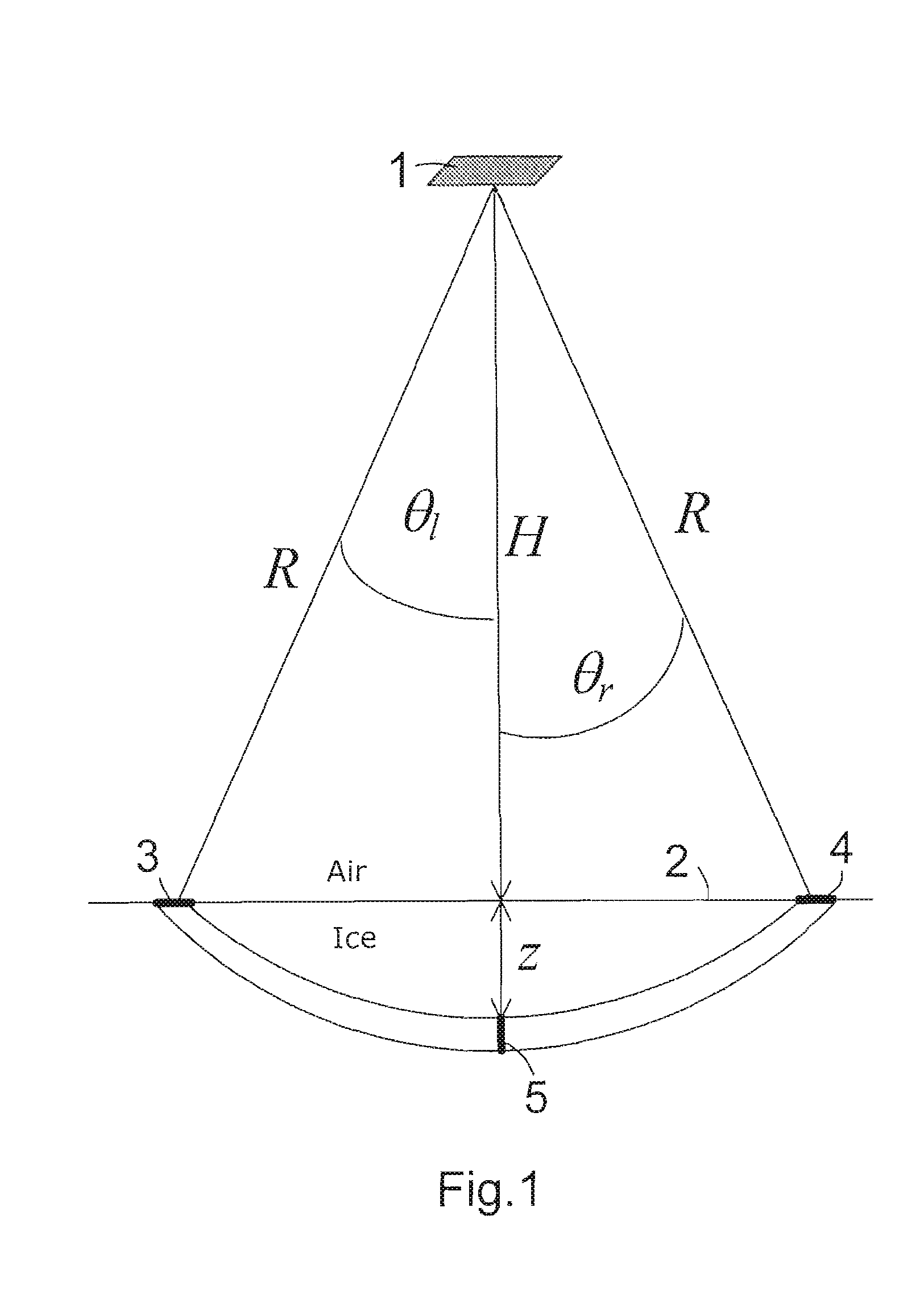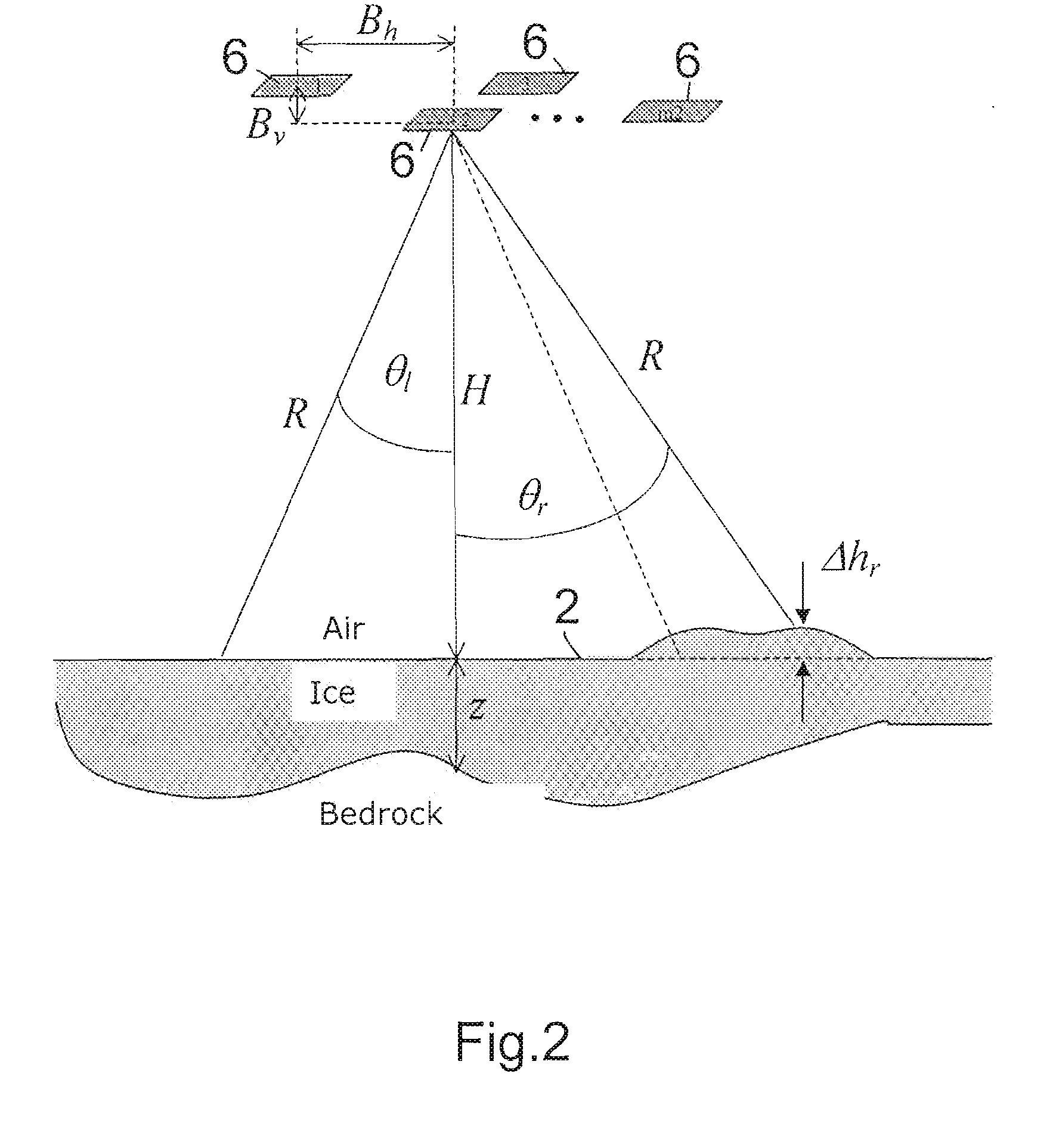Method for Examining an Ice Region or Dry Region Using Radar Echo Sounding
a radar echo and ice technology, applied in the direction of instruments, measurement devices, antennas, etc., can solve the problems of increasing hardware effort in the design and construction of the antenna, not substantially attenuating the so-called “cross ambiguities” of the known method, and reducing the useful signal coming from the direction of the nadir. to the upper ice layer. , to achieve the effect of improving the echo sounding properties
- Summary
- Abstract
- Description
- Claims
- Application Information
AI Technical Summary
Benefits of technology
Problems solved by technology
Method used
Image
Examples
Embodiment Construction
[0043]FIG. 2 is a schematic illustration of the radiation geometry of a nadir-oriented radar sensor 6 for echo sounding in ice. The direction of flight of the airplane- or space-borne radar sensor 6 is perpendicular to the plane of the drawing. Ambiguities transverse to the direction of flight superpose the interesting echo signal coming from the direction of the nadir. Because of the topography of the region to map, the geometry is generally not symmetric.
[0044]Due to physical and technical limits, the antenna aperture can not be large and thus sufficiently focussing to illuminate only the nadir region. Consequently, signals from the right and the left of the ground track are captured by the main lobe of the antenna. This fact has already been explained in the context of the description of FIG. 1 in which the same geometric numerals have been used as are now used in FIG. 2.
[0045]The multiple illustration of the radar sensor 6 is to symbolize that several spatially offset overpasses...
PUM
 Login to View More
Login to View More Abstract
Description
Claims
Application Information
 Login to View More
Login to View More - R&D
- Intellectual Property
- Life Sciences
- Materials
- Tech Scout
- Unparalleled Data Quality
- Higher Quality Content
- 60% Fewer Hallucinations
Browse by: Latest US Patents, China's latest patents, Technical Efficacy Thesaurus, Application Domain, Technology Topic, Popular Technical Reports.
© 2025 PatSnap. All rights reserved.Legal|Privacy policy|Modern Slavery Act Transparency Statement|Sitemap|About US| Contact US: help@patsnap.com



